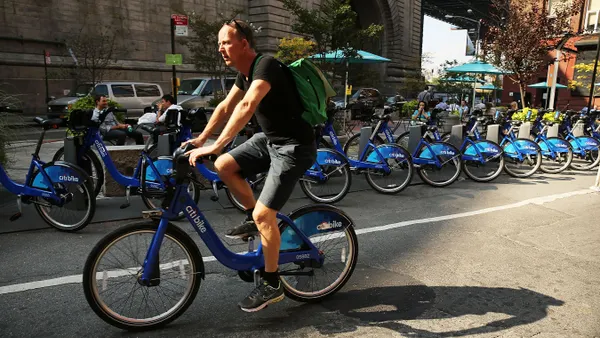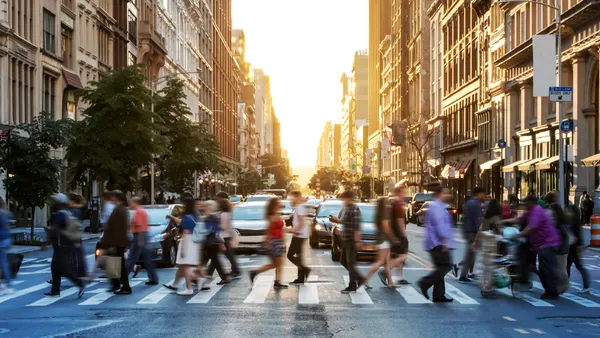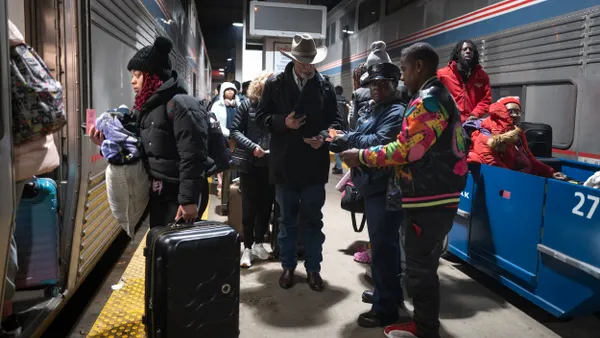Dive Brief:
- The Los Angeles subway will be the first mass transit system in the U.S. to install body scanners that can detect weapons and explosives on passengers, as reported by the Associated Press. The scanners will be installed in the coming months.
- The portable scanners — purchased from the U.K. company Thruvision — can screen passengers for metallic and non-metallic objects and can detect items from 30 feet away. Passengers will not have to slow down, as the scanners are capable of screening more than 2,000 passengers per hour. The agency will also install smaller sensors that can move around to target specific people or angles.
- Alex Wiggins, head of the Los Angeles County Metropolitan Transportation Authority law enforcement division, said screenings are "voluntary" but customers who elect not to submit to screenings will be barred from riding the subway. Signs will be posted at all stations about the screening process.
Dive Insight:
Despite Wiggins' comments about the voluntary nature of the new security system, the process will be a mandatory step for subway commuters. The federal Transportation Security Administration is backing L.A.'s move, with administrator David Pekoske saying the country is "dealing with persistent threats to our transportation systems." A December attack in which a man injured himself by detonating a homemade pipe bomb strapped to his torso in a crowded subway passageway in New York City brought into focus the potential terrorist threat on mass transit systems.
It's unclear how many other stations will follow suit to install the body scanners. They were tested in New York's Penn Station in February, and during the 2014 Super Bowl at a New Jersey Transit station. The TSA also tested bomb detection equipment in L.A. this winter, following a series of tests with five transit agencies over the past decade.
Security risks are an unfortunate area of concern for busy transit systems, both on vehicles and in stations or walkways. Riders not used to extra security measures may balk at the new technology, especially if it slows down any commutes or creates backlogs at entrances — considering the density of Los Angeles' metro area, and the popularity of the subway system during rush hour time, this is a possible scenario. Still, the technology should not be unfamiliar to anyone who has been through an airport, and it appears transit agencies will go in the direction of more screening to ward off future threats.









